
The Ultimate Guide to Tokyo’s Trains
Although traveling to Tokyo is super exciting and fun, it can also be extremely stressful if you don’t know how to make your way around. Unless you have a Japanese guide, or know someone who is Japanese to take you around, the Tokyo trains system can be fairly overwhelming! But once you get used to Tokyo’s trains, they are extremely easy to use and efficient! That’s why we’ve created this ultimate guide to using Tokyo’s trains so you can learn exactly how to use Tokyo’s trains and have a stress free holiday traveling to all the places you want to go!
Paying For The Trains
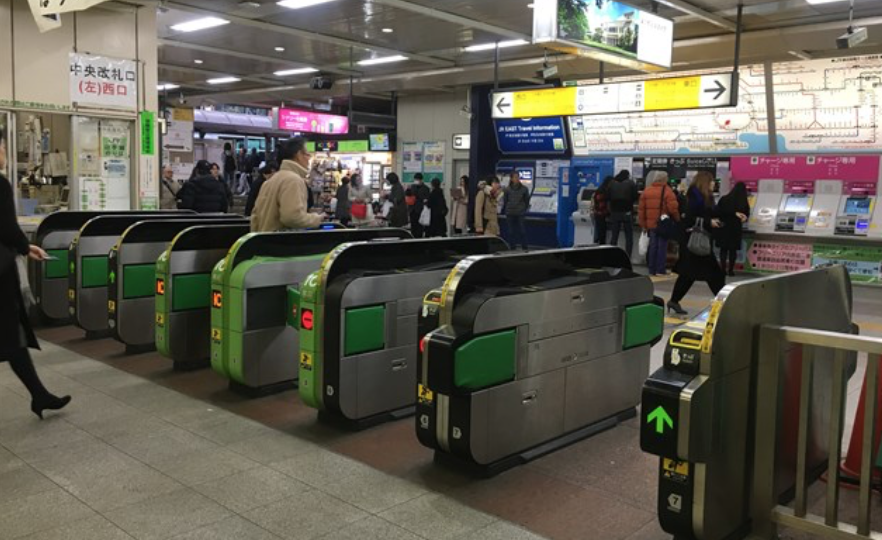
There are two main ways you can pay for your travel in Tokyo. This is through buying a train ticket or purchasing an ‘IC Card’ (Suica or Pasmo) and topping it up with money at one of the many pay stations located in every station. Before going on any further I would like to state some personal advise, I would highly highly recommend using a Suica or Passmo whilst going around Tokyo! The ticket system can be quite complicated and although there is usually a list of places and their prices, the places are usually written in Japanese. It is also very easy to make a mistake and accidentally pay extra/too little. So if you’re going to Tokyo, please get an IC card (I will explain how to get one down below) but just incase, I will also explain how to buy train tickets too!
Buying a Ticket
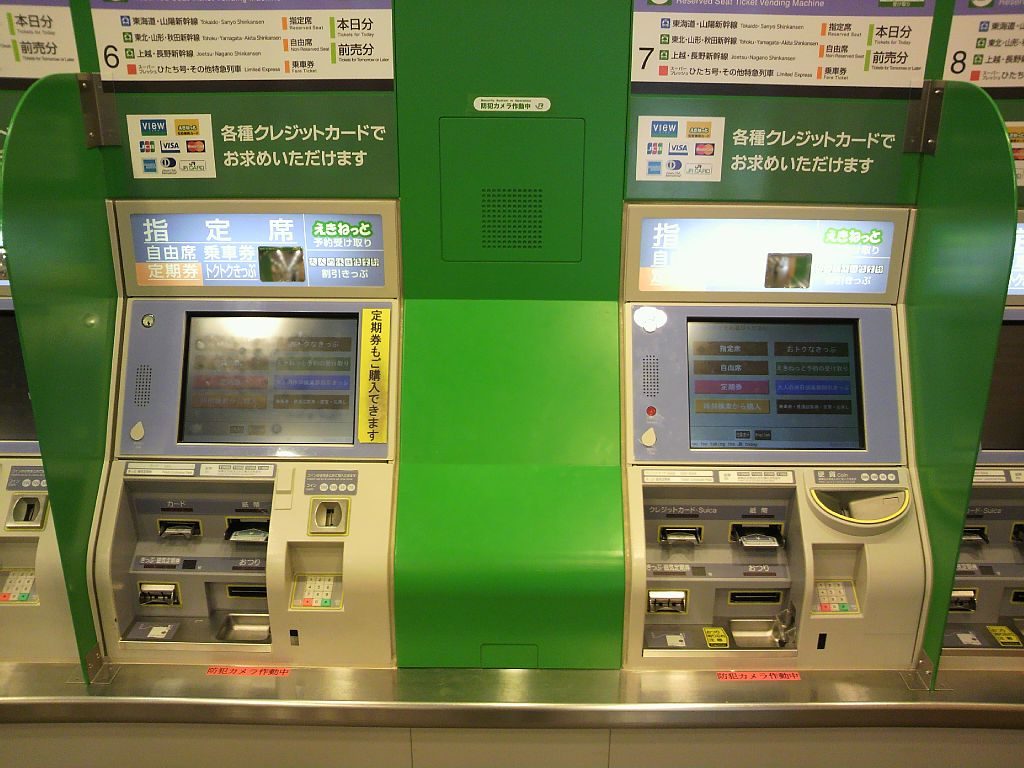
First, to enter the ticket gate, you must first buy a ticket from one of the ticket machines (pictured above). A lot of these now allow you to choose a language, so if it’s possible make sure you choose english! (unless you understand Japanese!) You then need to select ticket, if there is no english look out for the word that says 切符 or きっぷ; this is ticket in Japanese. Once you have selected that option, you will be presented with a screen full of numbers that looks like this:
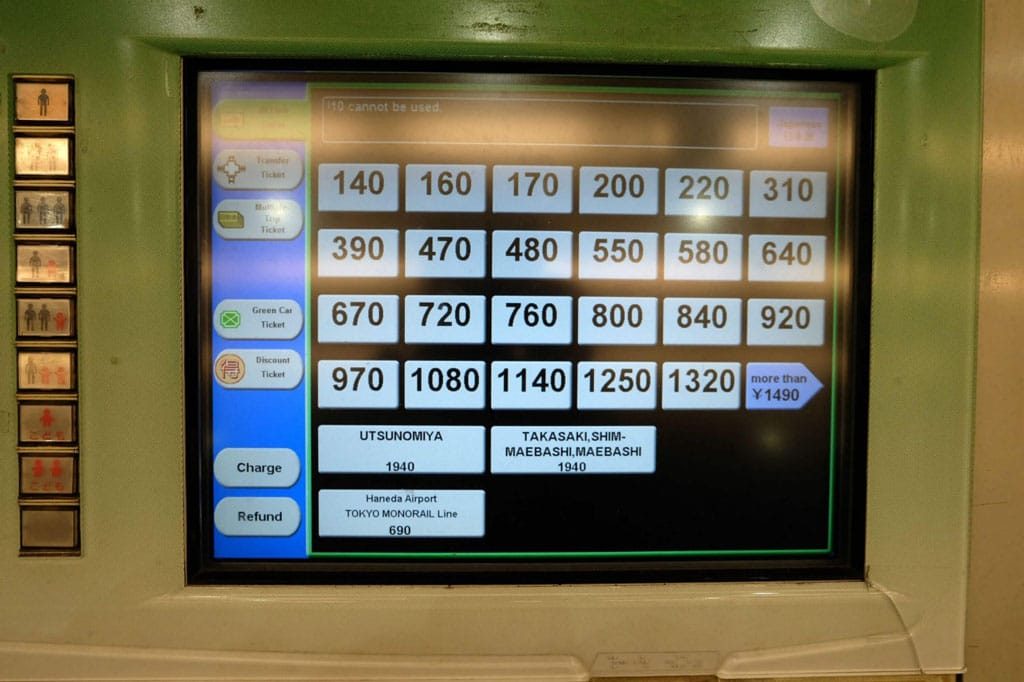
Tokyo trains tickets work by you choosing the amount of money that will get you to where you want to go. So these number selections are actually amounts of money. For example, 140 is 140yen. This is fairly straightforward, the problem is how do you know how much it costs for you to go where you want to go? To find out you need to look at the map above the machine and work it out. The map looks like this:
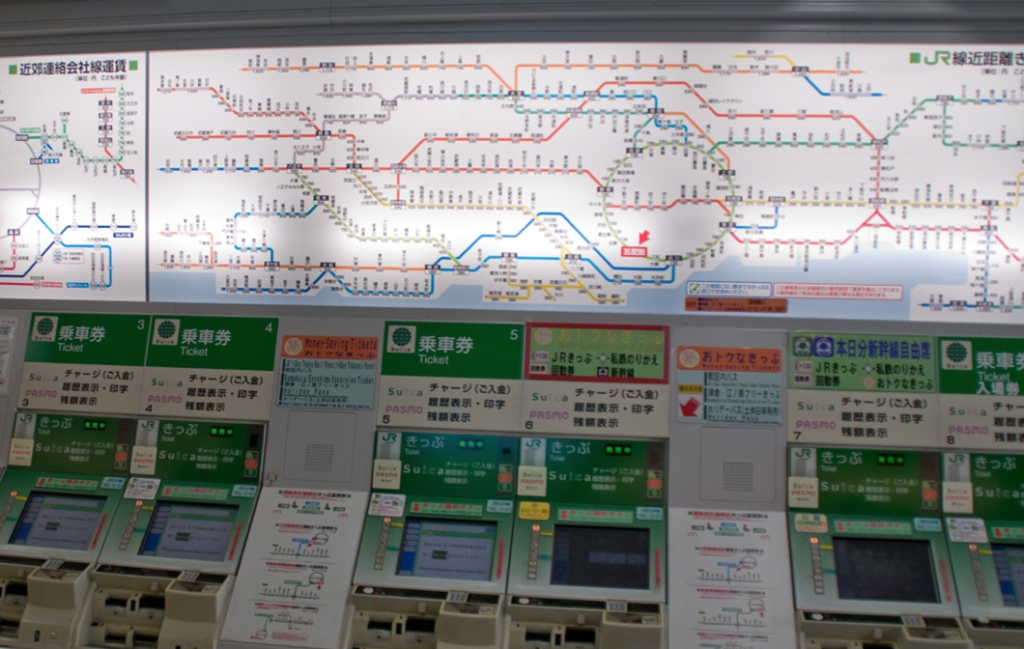
I mean, just from looking at the map you can see how complicated it is, and what makes it worse is that all the place names are in Japanese! If you’re in a situation where you really have to buy a train ticket and do not have an IC Card, I would suggest searching the place where you want to go in Japanese and then try and find that Japanese word on the map. Next to the place name there will be a number, select that same number on the ticket machine, insert your money and the ticket will come out. They look like this:
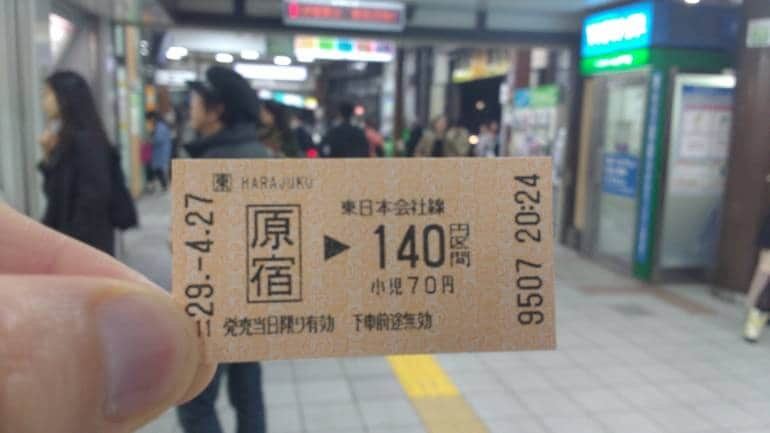
Buying a Suica/Pasmo
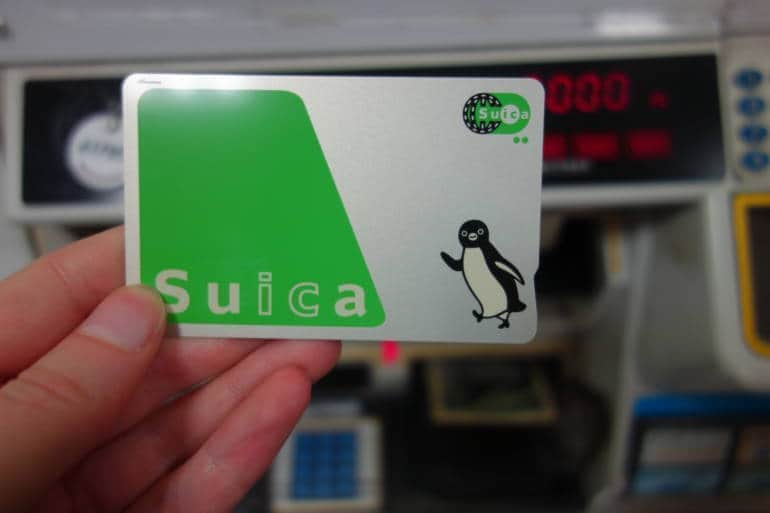
I’ve personally always used a Suica so that’s what I will be focusing on in this article but buying a Pasmo is almost the exact same process, it’s up to you which one you want to use! (There’s not much difference).
So, in order to start using your Suica, we first need to get it. This can be done at the same ticket machines that are used for buying a ticket, however some stations do not allow you to buy an IC Card there. So to avoid confusion and stress I’d highly recommend buying your Suica as soon as you get to the airport! At both Narita and Haneda, there is a train station underneath the airport and it is very well sign posted on how to get there! Another good point about buying it at the airport is that if you need help, there will always be someone there who can speak english!
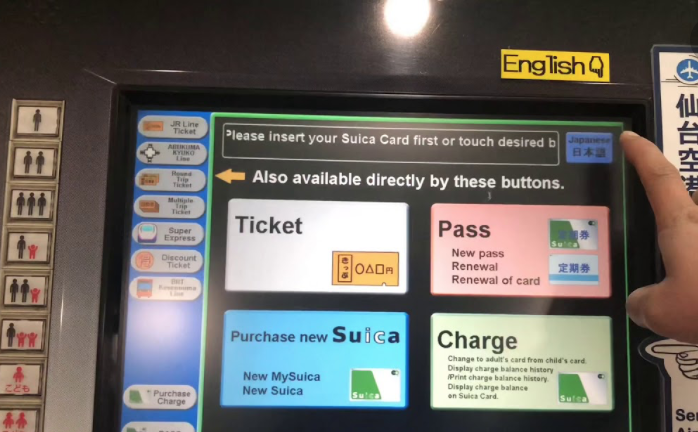
On the ticket machine screen select ‘purchase new Suica’. Just incase you are using a machine that doesn’t offer English the Japanese should say ‘Suicaの購入’. Once you have selected that you will be given a few options of things you can do. Make sure to select ‘Suica New Purchase’, not MySuica. You will then need to select the amount you want to put on your Suica. The Suica itself requires a 500yen deposit (which you can get back if you return it before you fly home) so if you choose 1000yen the balance of your suica will be 500yen etc. I’d recommend putting about 2000yen-3000yen on it just so you can travel without worrying about your balance for a while!
After inserting your money, your brand new Suica will come out! Now you’re ready to use the trains!
YOU MAY ALSO LIKE ☞☞☞☞ TOKYO’S TOP 7 PLACES TO GO DURING CHRISTMAS 2019
Riding the Trains
The Ticket Gate
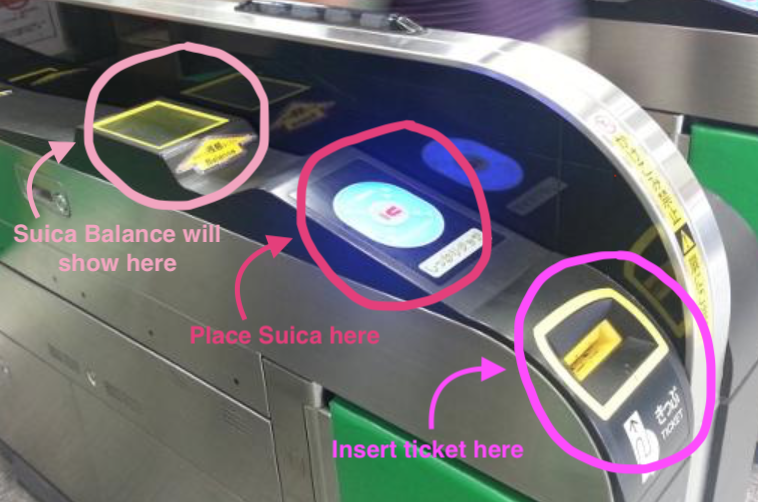
To ride the trains, you must first enter through the ticket gate. Above you can see a brief explanation of what each part is for. If you have a Suica, simply tap it on the place highlighted and the gate will open, you will also be shown your remaining balance. If you have a ticket, insert it into the place shown, walk through the gate and it will come out the other end of the gate- to forget to pick it up again!
The Various Lines and Companies
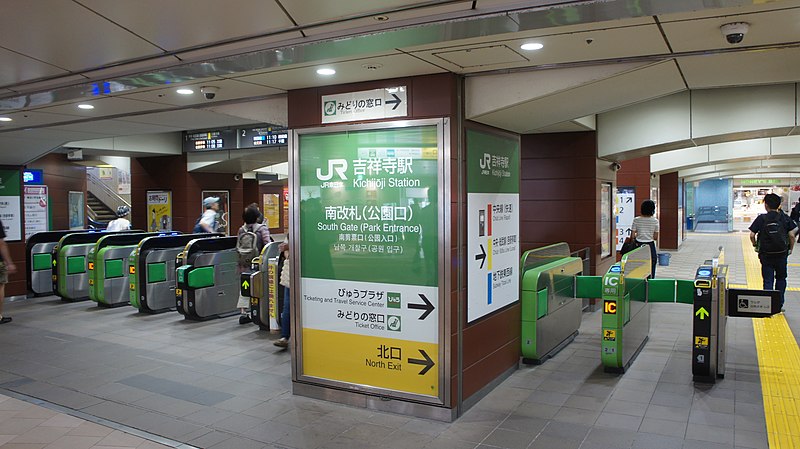
Before going on to talk about the main lines in Tokyo, I first would like to mention that there are 3 main companies running trains in Tokyo. JR or Japan Rail (this is the largest), Keio, Odakyu and all the subway lines. Due to these all being separate companies, if you need to change from one company to another, you will have to exit the ticket gate first and re-enter at the other companies ticket gate, you will also be charged separately. Also be careful when entering the ticket gate as if you make a mistake you will have to ask someone working at the station to let you out. So just make sure that the companies ticket gate you’re about to enter is 100% the correct one!
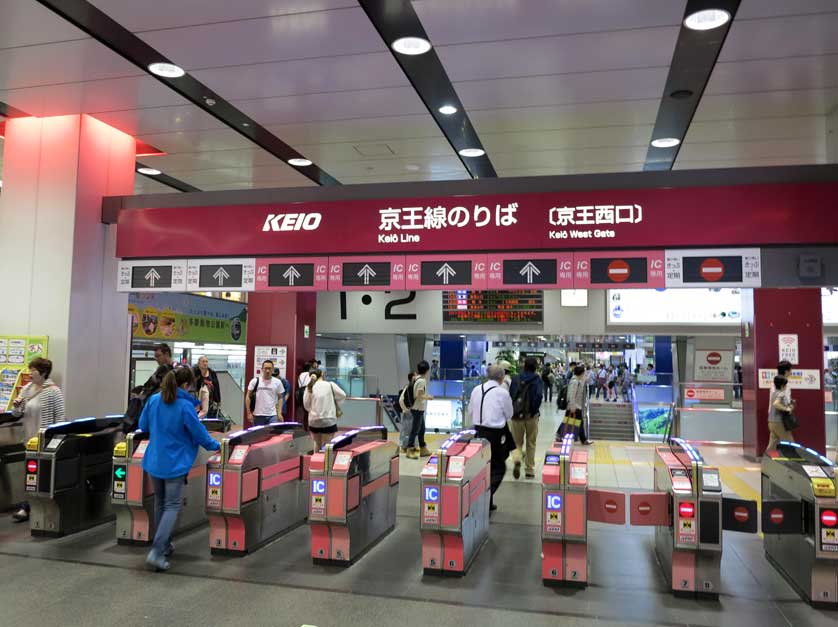
Although, I don’t feel like I need to say this, but just incase. I would highly recommend using Google Maps to get around Tokyo. It tells you exactly which lines you need to ride and at what time the next train is. I’ve seen many tourists using maps to get around Tokyo and although it’s doable, it may be quite stressful. If you’re worried about data whilst going around Tokyo, you should look into getting a pocket wifi. For more information click here!
But just incase you can’t use Google Maps, here’s a quick explanation of Tokyo’s main lines and where they go. Unfortunately I can’t talk about every single line in great detail in this article so if you have any specific questions, make sure to email us or send us a DM on instagram!
We also will not be mentioning the subway lines in this article, but if you want to learn more about them make sure to let us know and we’ll write a separate article!
JR Lines
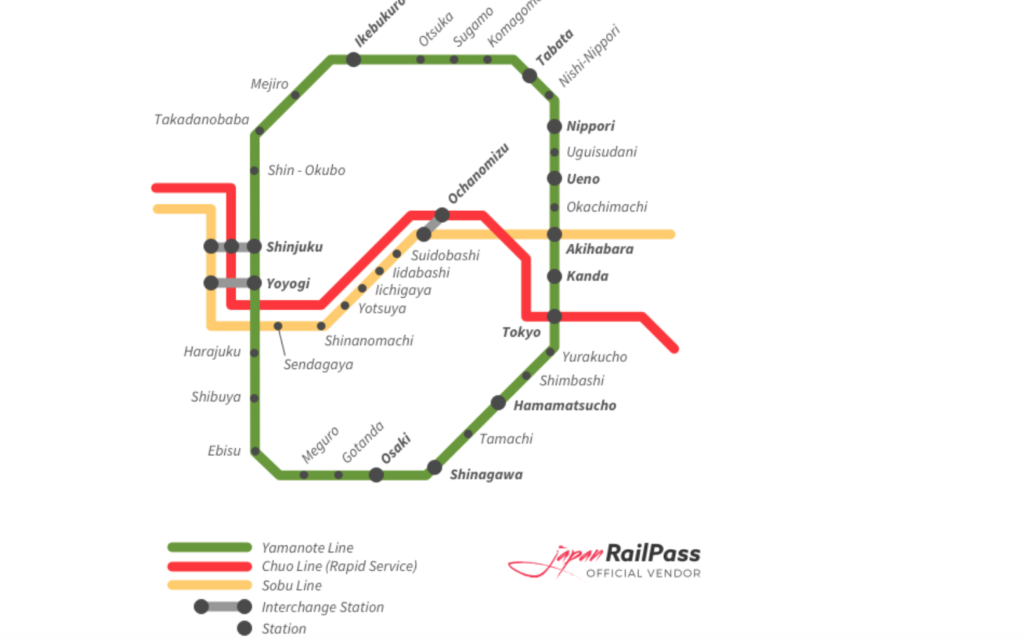
Photo Credit.
JR have 3 main lines running through Tokyo. You will probably end up using JR Lines the most in Tokyo as they hit all the major tourist places!
JR Chuo Line: (Red Line) One of the busiest Lines in Tokyo as it runs through the center of Tokyo. It runs from Tachikawa all the way to Tokyo Station, stopping off at major stations such as Kichijoji, Shinjuku and Tokyo Station. You can change from the Chuo Line to both the Yamanote Line and the Chuo-Sobu Line at Shinjuku Station.
JR Yamanote Line: (Green Line) Runs in a circle around Tokyo going from Shinjuku to Tokyo Station and back to Shinjuku. The line stops off at many major stations, such as Shibuya, Harajuku, Akihabara and Ueno. You can change to other JR Lines at Shinjuku.
JR Chuo-Sobu Line: (Yellow Line) This line runs along side the Chuo Line and stops off at stops such as Yotsuya, Ochanomizu and Akihabara. You can change to the Chuo Line at Ochanomizu.
Keio Lines

Photo Credit
Keio have 2 main lines running throughout Tokyo, unless you’re wanting to go somewhere really specific, like mount Takao, you will probably only end up using the Keio Inokashira Line.
Keio Line: Runs from Takaosanguchi Station to Shinjuku station, stopping off at stations such as Chofu Station and Meidaimae Station. if you’re wanting to change to lines running in different directions, change at Chofu Station.
Inokashira Line: One of the handiest lines in Tokyo. Runs from Kichijoji to Shibuya and stops such as Shimokitazawa! Make sure to take the rapid line to quickly get to Shibuya from Kichijoji!
Odakyu Lines

Photo Credit
Odakyu Run lines from Shinjuku in the opposite direction to Tokyo Station. The only real tourist spots the line hits are Shinjuku and Shimokitazawa. The only reason to use the Odakyu Line would be if it runs near to the place you are staying, or you’re wanting to go outside of Tokyo to Yokohama/Enoshima. Because we’re focusing on getting around Tokyo today, i’m not going to explain the lines in great detail, but if you’re looking to find out more information, check out the Odakyu website here.
Rules and Manners of Riding Trains in Tokyo
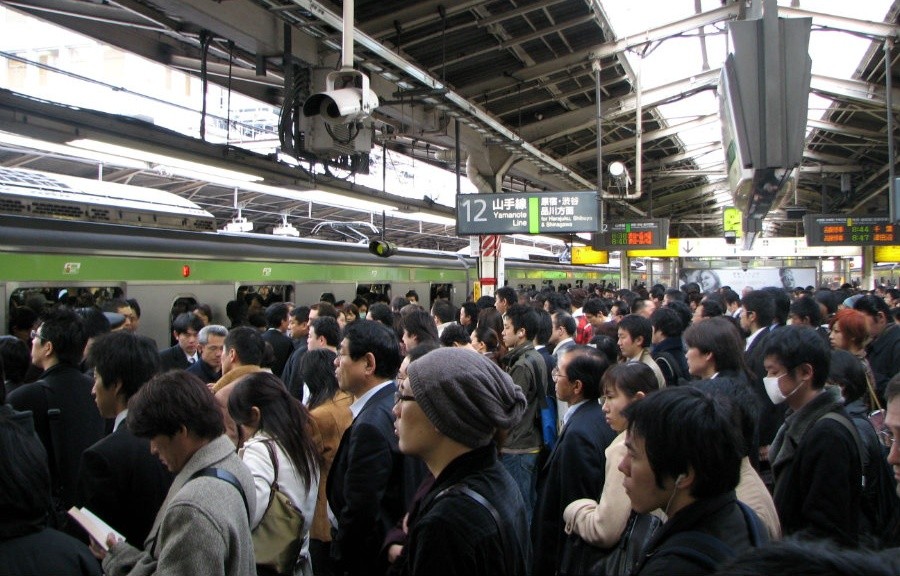
As you can see from the photo above. Tokyo trains and stations can get extremely busy and everyone is standing very close to one another. Everyone is simply trying to get from point A to point B without being interrupted or disturbed. Due to this there as certain rules and manners for riding trains in Tokyo, that may not exist in your country. To make sure you are being respectful and polite whilst in Japan, make sure to follow these few simple rules.

- Line up before getting on the train: To make everything flow as smoothly as possible, Japanese people will queue in a single file (inside the white lines on the floor) and wait for the train to come. The person at the front of the queue gets on first. Do not push in front of the people who are already queuing, or try to get on the train before them. It’s very rude and you will annoy a lot of people. Also when queueing, make sure to stand in the line, not off to the side.
- Wait for people to get off the train: When the train arrives at the platform, everyone will walk closer to the train and wait at either side of the door to let everyone off before they get on. Do not try to get on before everyone gets off, it will cause a massive disturbance for everyone and could hold them up.
- Don’t call people on the train: In order to not disturb others on the train, Japanese people do not call people on the train. If you get a call simply wait until you get off the train and call them back. Also make sure your phone is on silent mode.
- Don’t do anything that will disturb people: Try to talk quietly whilst on the train and stand in a place that won’t get in the way of everyone. There was recently a video that went viral which showed French rugby fans sat on the floor of the train, singing and throwing people in the air. please don’t do something like this even if you think it’s funny. It gives tourists a really bad name and is very inconsiderate of those people who are riding the train around you.
- Don’t sit in priority seats: I’m pretty sure this is the same in every country, but don’t sit in the priority seats. These are for people who need them. Just incase it’s only written in Japanese, the Japanese is ‘優先席’ and they will be clearly marked and be a different color.
YOU MAY ALSO LIKE☞☞☞☞ TOKYO’S MOST INSTAGRAM WORTHY CAFES 2019
Helpful Japanese Words and Phrases

Photo Credit
Although there are many tourist centers dotted around, and many station workers know a bit of English, it may be hard getting around Tokyo if you don’t know any Japanese. So just incase you get in a sticky situation and need to speak Japanese, here are some survival phrases. It may also be good for you to try using these phrases if you’re trying to learn Japanese!
Useful Words
- Station – 駅 (eki)
- Station Worker – 駅員 (Eki-in)
- Ticket office – 窓口 (Mado-guchi)
- Ticket gate – 改札(Kaisatsu)
- Ticket – きっぷ (kippu)
- Train – 電車 (Densha)
- Changing Trains – 乗り換え (Norikae)
- 〜 Line – 〜線 (Sen)
- Money – お金 (Okane)
- To Mistake – 間違える (Machigaeru)
- Rapid – 急行 (Kyuukou)
- Local – 各駅停車 (Kaku-eki-densha)
Useful Phrases
- Where is ____ ? – __はどこですか?( ___wa doko desu ka?)
- How much does it cost from ____ to ____? – _から_まではいくらですか? ( ___kara ___made wa ikura desu ka?)
- I want to go to _____. How do I get there? – _に行きたいんですが、どうやって行けばいいですか? ( __ni ikitain desu ga, douyatte ikeba ii desu ka?)
- Excuse me – すみません (sumimasen)
- Thankyou – ありがとうございます (arigatou gozaimasu)
- I’m Sorry – ごめんなさい (gomennasai)
- Where is the exit/ entrance? – 出口/ 入口はどこですか? (deguchi/ iriguchi wa doko desu ka?)
- When is the next train? – 次の電車は何時ですか? (tsugi no densha wa nan ji desu ka?)
YOU MAY ALSO LIKE ☞☞☞☞ A DAY AT ODAIBA’S UNKO MUSEUM: A POOP THEMED MUSEUM
Thankyou for checking out our article! We love to hear what you think so make sure you join the discussion and leave a comment down below! ♡
If you enjoyed this post don’t forget to share to let us know that you want more♡
FOR MORE INFO ON JAPAN TRAVEL CHECK OUT OUR SOCIAL MEDIA:
INSTAGRAM
TWITTER
YOUTUBE
Otaku in Tokyo is a travel website dedicated to helping your trip to Japan with tips and information on where to visit. With particular focus on real life anime locations, pop culture and Tokyo’s hidden gems!
♥︎Follow for more♥︎
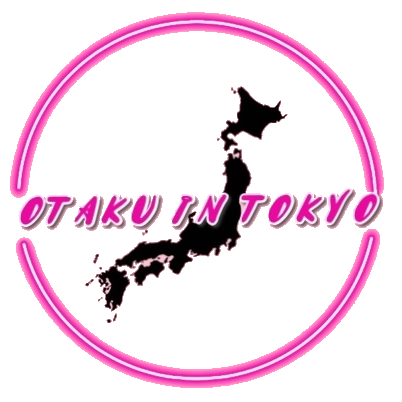
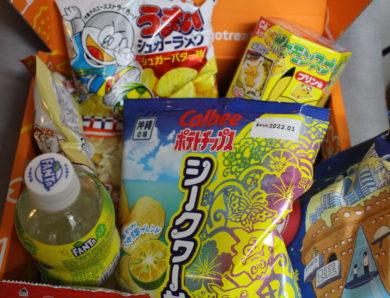
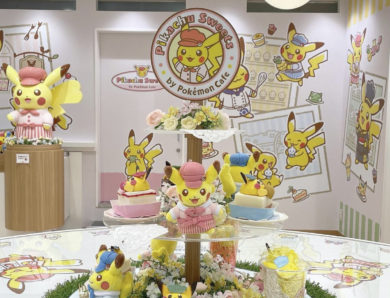
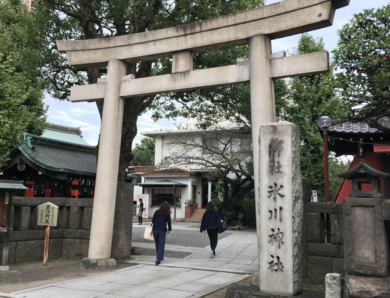
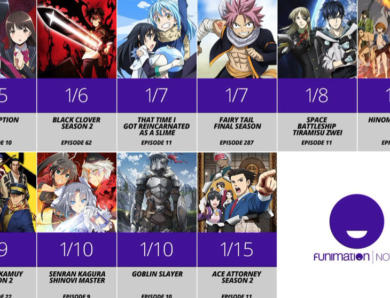


No Comment